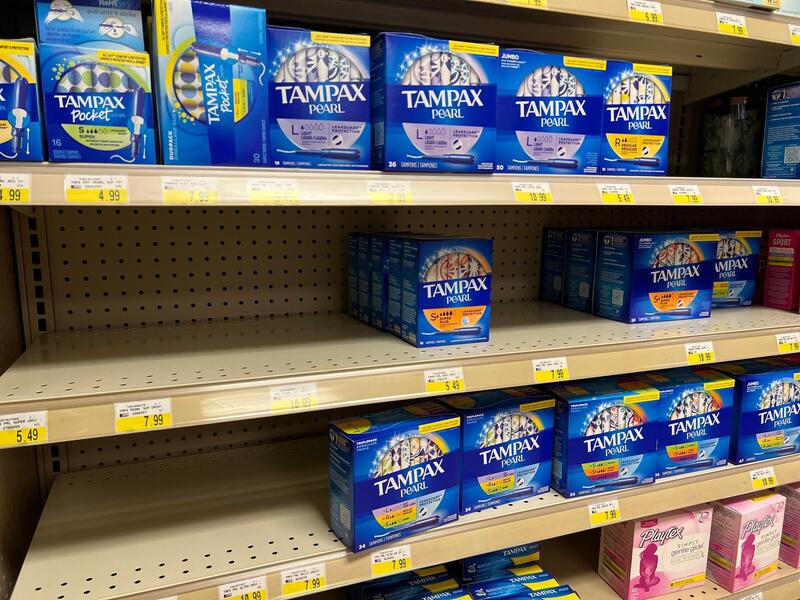The supply chain and inflation are now affecting menstrual products which means your brand of tampons and pads might be harder to find.
Several factors have led to a shortage of period products from popular brands like Tampax and Always.
Breanne Mueller, M.D., an OB/GYN at Sanford Health in Aberdeen, South Dakota, weighs in.
“Women are brand loyal,” Dr. Mueller told Sanford Health News.
“They use the same products their entire lives and it’s difficult to change. So, when you see that your brand or your go-to isn’t there, it’s a little bit anxiety-provoking. That’s what I’m hearing.”
Why the shortage?
There are a few factors contributing to the bare shelves.
According to the New York Times, Procter & Gamble — which manufactures tampon giant Tampax, that sells 4.5 billion boxes globally each year — said on a recent earnings call that it had been “costly and highly volatile” to acquire the raw materials needed for production, such as cotton and plastic.
Inflation is also making other popular menstrual products more expensive.
Bloomberg reported that the average price for a package of menstrual pads increased by just over 8% from the start of this year through the end of May, while the price of tampons increased by nearly 10%.
Further compounding the issue, Dr. Mueller said, some of those materials and items were needed by medical professionals during the beginning surges of the COVID-19 pandemic.
Additionally, shortages of staff at factories to produce the products has caused a lag demand. The fact that women need to use menstrual care products, even if there is a limited supply, allows companies to increase prices.
This product shortage comes on the heels of another national shortage of baby formula.
Some safe alternatives
“Maybe this is a good time to branch out and try something new,” Dr. Mueller suggested.
There are number of safe alternatives and opportunities for women to consider during their period including reusable pads, period underwear and menstrual cups or discs.
“These products can be pricey on the front end but many of them are reusable and environmentally friendly,” she explained. “It may take some trial and error to see how it fits your body, but it could be a great time to try something new. You may end up liking it even better than what you used before.”
Things you should avoid
Dr. Mueller has some advice for things you shouldn’t do.
First, don’t panic.
“The shortage is temporary and there is no shortage in the other brands so there are many other products available,” she said.
There are a few things to stay away from when trying to navigate the shortage including:
- Wearing tampons for longer stretches of time. This puts you at risk of toxic shock syndrome, a potentially fatal condition that occurs when tampons are worn for more than eight hours.
- Reusing disposable products that are meant for one-time use.
- Stockpiling products if you see more than you need.
Lastly, Dr. Mueller encourages women to be mindful and kind, and to donate any feminine hygiene products whenever possible.
Read: Girls and puberty: It’s about more than their first period
“Because of shortages and increased costs on both labor and materials, the price of actual feminine products has gone up,” she said.
“Not everyone has a lot of extra disposable income and there are people who are struggling. If you do have the extra means or you do have the extra product, consider donating to programs that can help people who are struggling.”
If you have questions, health concerns or trouble finding alterative products, you’re encouraged to reach out to your women’s care specialist or find a doctor at Sanford Health.
Read more
- Choosing the right period product for you
- How to find primary care at Sanford Health
- A healthy life: Advice for women from their 20s to their 80s
…
Posted In Gynecology, News, Parenting, Specialty Care, Women's

